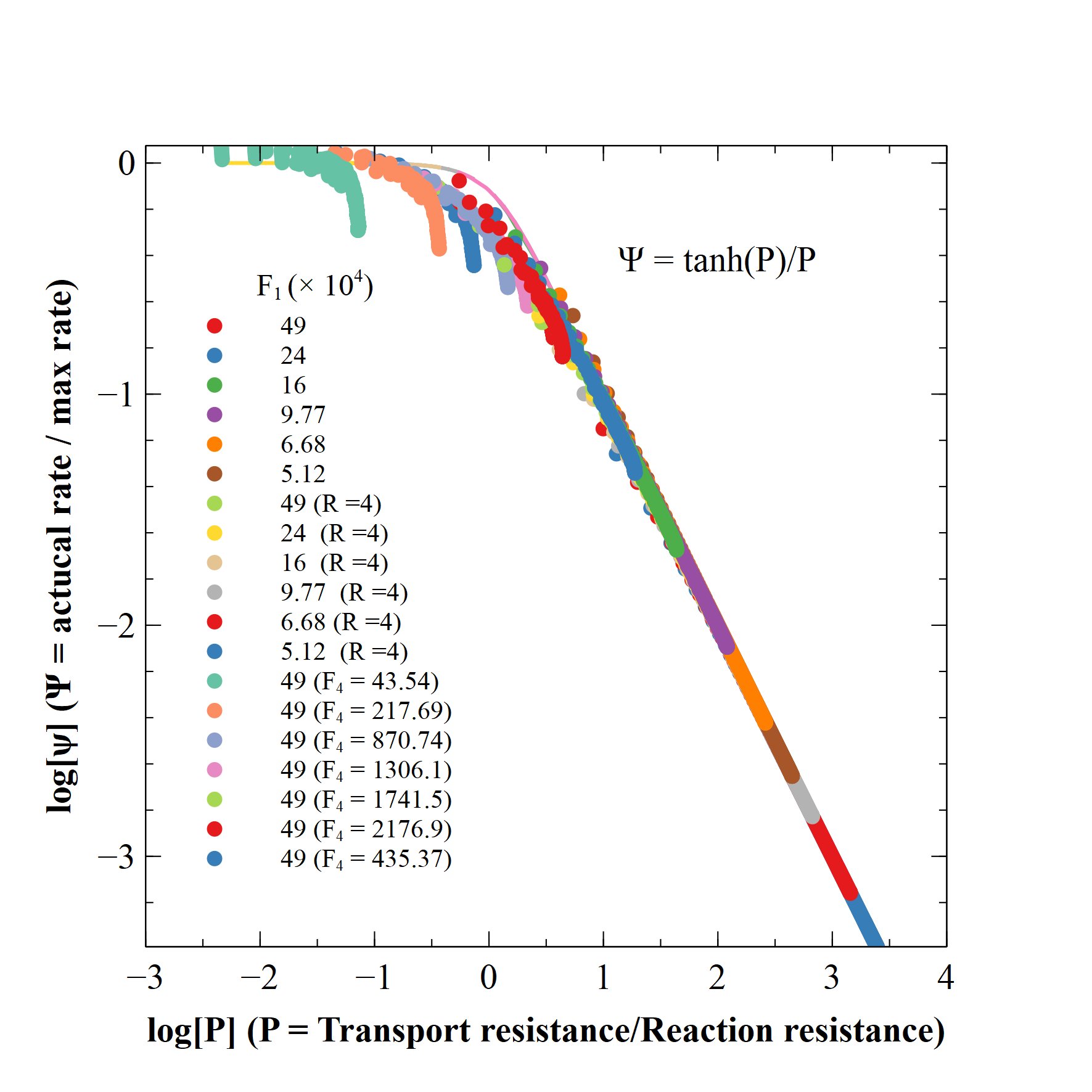2023 AIChE Annual Meeting
(521j) Reaction Regimes in Interfacial Polyamidation and Their Effect on Film Properties
\Dhumal{2009} showed, for the polyurea system, that the regime can shift during the reaction, and the final film formed has proportions formed under the dominance different rate process. In the polyamide system considered here, account has to be taken of the byproduct HCl and its effect on the course of reaction [2]. We show that an effectiveness factor Ï and a diffusion-reaction parameter, leads to a relationship similar to the well known one for the case of diffusion with first order reaction. Ï is the ratio of actual rate and maximum reaction rate and P is ratio of transport resistance and reaction resistance.
Figure 1 shows the effect of P on Ψ on log-log co-ordinates for a large number of combinations of the model parameters, along with the result for diffusion-with-first order reaction. This plot allows us to identify the controlling regimes during reaction as P changes. We have further studied the influence of the regime on film properties.
Reference:
- Dhumal, S. S., and Suresh, A. K., 2009, âA comprehensive model for kinetics and development of film structure in interfacial polycondensation,â Polymer 50, 5851â5864.
- Preeti Jha, Akkihebbal K. Suresh, A modelling study of interfacial polyamidation, Applied Surface Science, Volume 613, 2023, 155889, ISSN 0169-4332

